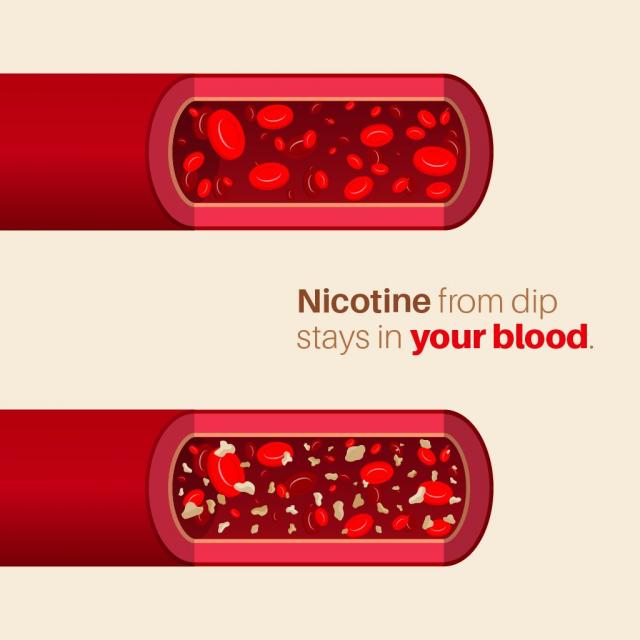You may have questions about smokeless tobacco products like dip and chew. The more you know about the long and short-term effects of smokeless tobacco, the more you’ll understand the risks.

What Is Smokeless Tobacco?
Smokeless tobacco is tobacco that isn’t burned or inhaled by the user. It’s also known as chewing tobacco, chew, dipping tobacco, dip, oral tobacco, spit, spitting tobacco, and snuff.
Most people chew or suck (dip) the tobacco in their mouth and spit out the tobacco juices that build up. There’s also “spitless” smokeless tobacco.
There are two main types of smokeless tobacco products:
- Chewing tobacco. Chew is available as loose leaves, plugs (bricks), or twists of rope. A piece of tobacco is placed between the cheek and lower lip, typically near the back of the mouth. It’s either chewed or held in place. Saliva is spit out or swallowed.
- Snuff tobacco. Snuff tobacco is finely cut or powdered tobacco. It is packaged moist or dry—most American snuff is moist. It may be sold in different scents and flavors. Dip or dipping tobacco and snus are common forms of moist snuff in the US. It’s available loose or in small pouches similar to tea bags. People take a pinch or pouch of moist snuff and put it between the cheek and gums—or behind the lips.
View the different types of smokeless tobacco products.
Are Chew and Dip Addictive?
Yes. Both dip and chewing tobacco contain nicotine, which is addictive. People who use smokeless tobacco and people who smoke have similar levels of nicotine in their blood.
With smokeless tobacco, nicotine is absorbed through the mouth and gets into the blood. Then it goes to the brain.
Even after people take tobacco out of their mouths, nicotine is still being absorbed into their blood. Research shows that nicotine stays in the blood longer for people who use smokeless tobacco than for people who smoke.
Are Chew and Dip Harmful?
Yes—there are many harmful health effects of chewing tobacco and dip, including:
- Cancer. Smokeless tobacco has high levels of chemicals and other substances that can cause cancer, especially mouth and throat cancer. It can also cause leathery white patches in the mouth that can turn into cancer.
- Tooth decay and mouth sores. The sugar in smokeless tobacco can cause tooth decay and painful mouth sores.
- Poor gum health. Dip and chew can cause people’s gums to pull away from their teeth, which can lead to loose teeth.
How Much Do Chew and Dip Cost?
Smokeless tobacco is expensive, and the cost adds up! Each can of dip costs an average of $3. Someone who uses two cans a week could spend about $300 a year. Using a can per day could cost almost $1,100 a year.
Chewing tobacco costs about $2 a pouch. Someone who uses a pouch every day could spend over $700 a year.
How to Quit
Quitting smokeless tobacco is a lot like quitting smoking, but there are some differences. Get tips to help you quit chewing or dipping tobacco.







